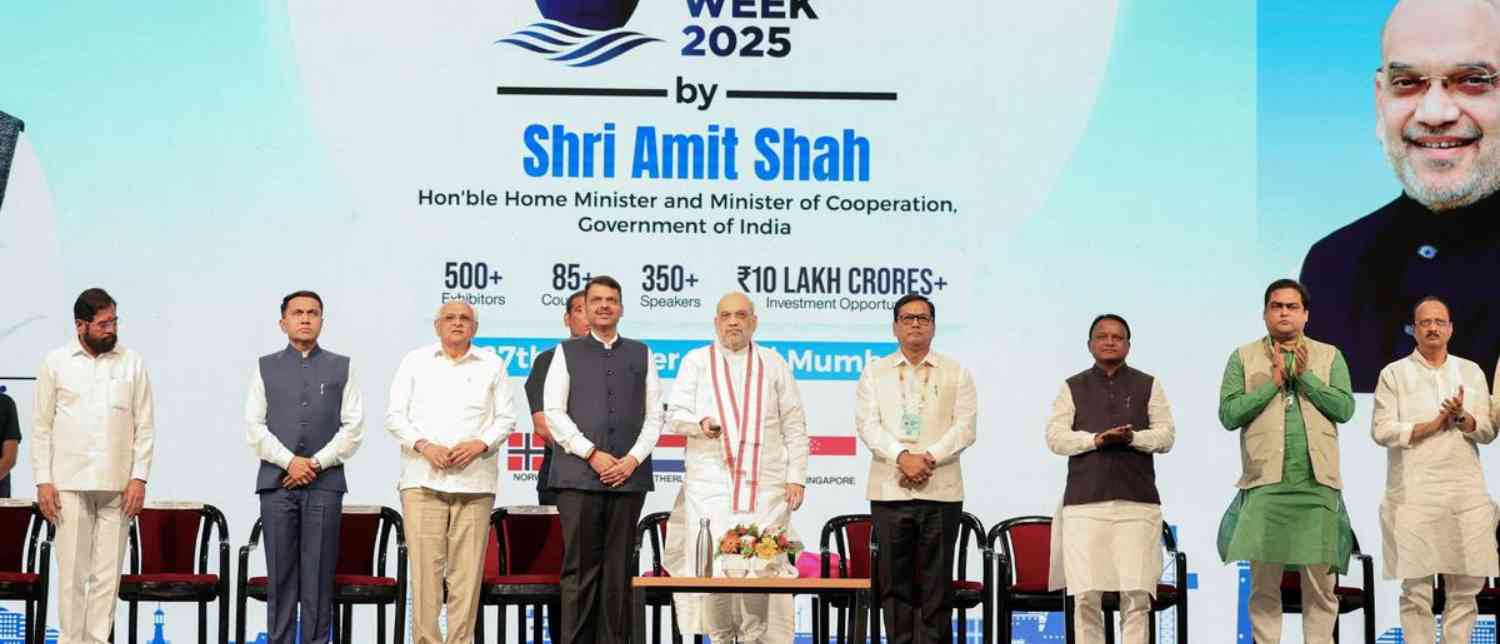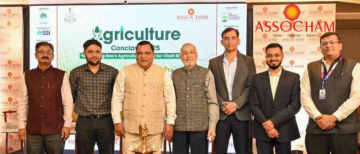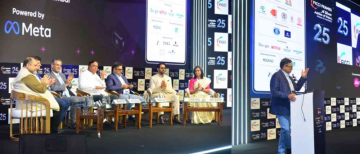Union Home Minister and Minister of Cooperation Amit Shah inaugurated the much-anticipated India Maritime Week 2025 (IMW 2025) in Mumbai, marking a defining moment in India’s journey toward becoming a global maritime power. The event, organized by the Ministry of Ports, Shipping, and Waterways (MoPSW) in collaboration with the Indian Ports Association, is being held from October 27 to 31 at the NESCO Grounds (Bombay Exhibition Centre) under the theme “Uniting Oceans, One Maritime Vision.”
The inauguration ceremony was attended by a host of dignitaries, including Maharashtra Chief Minister Devendra Fadnavis, Gujarat Chief Minister Bhupendra Patel, Goa Chief Minister Dr. Pramod Sawant, Odisha Chief Minister Mohan Charan Majhi, Maharashtra Deputy Chief Ministers Eknath Shinde and Ajit Pawar, and Union Minister for Ports, Shipping, and Waterways Sarbananda Sonowal, among others.
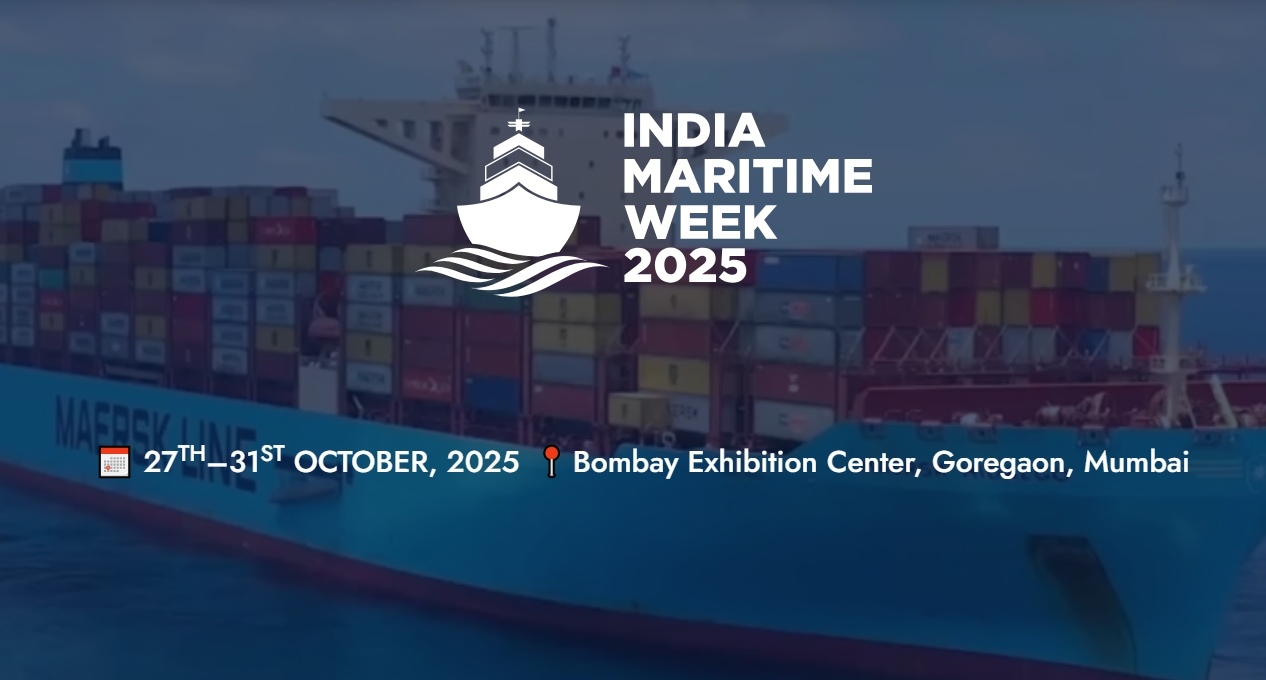
India’s Maritime Moment: From Gateway of India to Gateway of the World
Addressing the gathering, Amit Shah declared that “this is India’s Maritime Moment”, symbolizing the country’s transformation from the Gateway of India to the Gateway of the World. He emphasized that over the past decade, deep structural reforms in the maritime economy have catapulted India into a position of strength on the global maritime map.
Highlighting India’s strategic advantage, Shah noted that the nation’s coastline stretches over 11,000 kilometers, with 13 coastal states and Union Territories contributing nearly 60% of India’s GDP. India’s Exclusive Economic Zone (EEZ) spans an impressive 23.7 lakh square kilometers, attracting global investors and manufacturers. Over 800 million people live in these maritime states, making the sector vital for both economic growth and livelihoods.
The Indian Ocean Region (IOR), comprising 38 countries, contributes around 12% of global exports, and through IMW 2025, India aims to showcase this immense potential to international investors and maritime leaders.
Building Bridges Across Oceans: India’s Role in the Global Maritime Order
Shah underscored how India, leveraging its maritime position, democratic stability, and naval capabilities, is acting as a bridge between the Indo-Pacific and the Global South—promoting development, security, and environmental sustainability.
With a maritime history that spans nearly 5,000 years, India now stands ready, under the leadership of Prime Minister Narendra Modi, to create a new chapter in global maritime progress. The presence of representatives from over 100 countries at this year’s summit, he noted, reflects India’s growing influence as a hub of regional cooperation and global partnership.
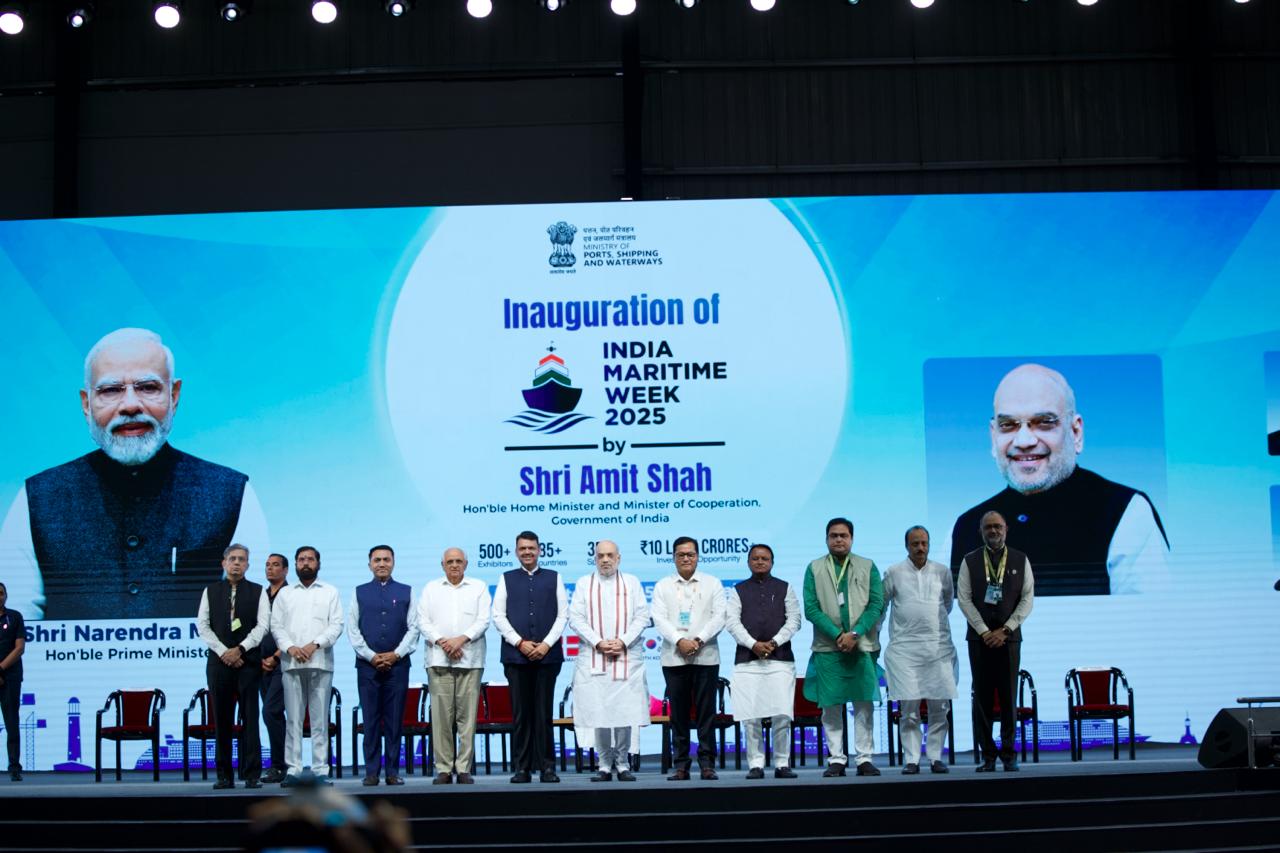
India Maritime Week: A Premier Platform for Global Maritime Dialogue
Over the years, India Maritime Week has evolved into one of the most prestigious maritime dialogue platforms in the Indo-Pacific region. The 2025 edition is expected to significantly advance India’s goal of securing a top position in the global maritime industry by 2047—aligning with the country’s Maritime Amrit Kaal Vision.
This year’s event is set to witness participation from over 350 speakers across 100+ countries, more than 500 companies, and a staggering one lakh delegates. It is also projected to unlock investment opportunities worth ₹10 lakh crore, reinforcing India’s commitment to mutual cooperation rather than competition.
Shah emphasized that India’s maritime roadmap aims to seamlessly integrate the country’s ports, logistics, and industries with the global maritime ecosystem.
The Three Pillars of Modi’s Maritime Vision: Security, Stability, and Self-Reliance
Amit Shah detailed Prime Minister Modi’s maritime vision, which stands firmly on three pillars — security, stability, and self-reliance. Through initiatives such as Sagarmala, Blue Economy, and the Green Maritime Vision, the government has laid out an ambitious plan to position India among the top five shipbuilding nations globally.
Under the Maritime India Vision 2030, India has set a port-handling target of 10,000 million metric tons per year, while also fully digitizing port transport systems. The country’s connectivity is being enhanced through strategic projects like the India–Middle East–Europe Economic Corridor, the Eastern Maritime Corridor, and the North-South Transport Corridor, which will transform India into a vital node in global trade.
Transforming ‘Sagar’ to ‘Mahasagar’: India’s Expanding Global Footprint
Reflecting on India’s progress, Shah highlighted how two-thirds of global trade now flows through the Indo-Pacific maritime route, with 90% of India’s trade dependent on maritime channels.
He explained that Prime Minister Modi’s maritime policy has evolved into MAHASAGAR — Mutual and Holistic Advancement for Security and Growth Across Regions. This policy embodies India’s expanding global footprint and aspiration to transform “Sagar” (Sea) into “Mahasagar” (Grand Ocean), symbolizing an era of maritime leadership.
To realize this vision, the government has increased the maritime budget sixfold, from $40 million to $230 million, enabling massive infrastructure development and modernization.
Massive Investments and Reforms: Driving the Maritime Revolution
Shah detailed a series of game-changing investments and legislative reforms shaping India’s maritime future:
-
Sagarmala Project: A total of 839 projects worth $70 billion have been identified for completion by March 2025; 272 projects worth $17 billion are already complete.
-
Great Nicobar Project: A $5 billion mega initiative that will boost India’s role in global maritime trade.
-
Cochin Shipyard Expansion: Construction of India’s largest dock, with an investment of $200 million.
-
Maritime Heritage Complex in Gujarat: A tribute to India’s rich seafaring legacy.
-
Legal Modernization: Parliament has replaced the 117-year-old Indian Ports Bill with a modern, globally aligned framework.
-
The Major Port Authorities Act (2021) grants greater autonomy to ports, promoting efficiency and modernization.
-
106 new waterways have been declared under the National Waterways Act (2016), expanding inland connectivity.
These initiatives, Shah said, are designed to create a resilient, future-ready maritime ecosystem aligned with global best practices.
Boosting the Blue and Green Economies
The Home Minister also spotlighted the government’s strides in strengthening the Blue Economy to ensure coastal security and fishermen’s welfare. Over the past decade, coastal shipping has grown by 118%, while cargo handling has surged 150%.
Turn-Around-Time (TAT) at Indian ports has been drastically reduced, now comparable to global standards, enhancing efficiency and competitiveness.
India’s maritime vision also embraces environmental responsibility. “Our goal,” Shah said, “is to build a Green Maritime Future—one that accelerates development while maintaining balance with nature.”
Recognizing the vulnerabilities of Small Island States and Global South nations that depend on oceans for survival, India is advancing a shared, green, and prosperous oceanic vision, acknowledging that climate change is an existential challenge for many coastal communities.
DCIL Showcases Innovation and Sustainability at IMW 2025
Adding another highlight to the event, the Dredging Corporation of India Limited (DCIL) showcased its excellence at the India Maritime Week 2025 through a dedicated pavilion inaugurated by Dr. M. Angamuthu, IAS, the company’s Chairman.
The pavilion drew widespread attention from visitors and industry professionals for its cutting-edge dredging technologies, sustainability initiatives, and innovative projects. Dr. Angamuthu lauded the team’s effort, calling it “a great show, perfectly managed in all aspects.”
DCIL’s participation underscored its strategic role in:
-
Promoting innovation in dredging,
-
Advancing sustainability practices,
-
Supporting maritime infrastructure, and
-
Contributing to India’s Blue Economy goals.
In a governance update, DCIL also announced a postal ballot for the appointment of Mr. Divakar Sanamandra as Managing Director and CEO (Additional Charge) for six months, from October 16, 2025, to April 15, 2026, reinforcing its commitment to robust leadership and transparency.
India Maritime Week 2025: A Catalyst for Global Maritime Leadership
The five-day IMW 2025 is not just an event—it’s a statement of intent. Featuring flagship conferences such as the Global Maritime India Summit (GMIS 2025), the QUAD “Ports of the Future” Conference, the Great Oceans Dialogue, and the SheEO Conference, it brings together policymakers, industry leaders, innovators, and investors under one roof.
Over 400 exhibitors are showcasing advanced shipbuilding technologies, logistics solutions, and green shipping innovations, alongside country sessions with Norway, the Netherlands, Denmark, and Sweden, and regional sessions from 11 Indian states and Union Territories.
The week’s key highlight will be Prime Minister Modi’s special address on October 29, followed by a Global CEO Forum featuring top shipping and logistics leaders.
According to Union Minister Sarbananda Sonowal, IMW 2025 will help translate ideas into actionable projects, unlocking a $1 trillion maritime investment roadmap. He remarked, “Under PM Modi’s dynamic leadership, we are transforming our ports, shipping, and logistics ecosystem into one that is resilient, sustainable, and future-ready.”
Charting India’s Course Toward a Maritime Future
As Mumbai hosts one of the world’s largest maritime gatherings, India Maritime Week 2025 signals a defining step in the country’s transformation from a coastal nation to a global maritime leader.
Backed by visionary policy, world-class infrastructure, and an unwavering commitment to sustainability, India is steering toward a future where its seas not only power economic growth but also embody global cooperation and environmental balance.
This truly is India’s Maritime Moment—one that redefines the Gateway of India as the Gateway of the World.
With inputs from agencies
Image Source: Multiple agencies
© Copyright 2025. All Rights Reserved. Powered by Vygr Media.

